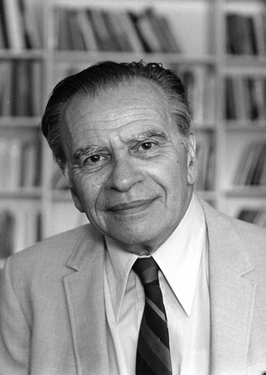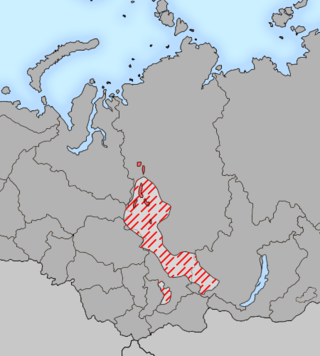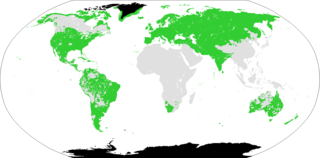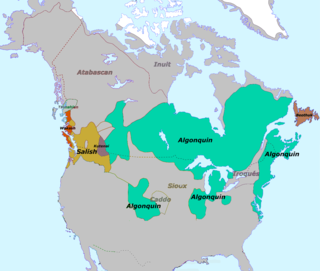Background
The controversial hypotheses in question fall into two categories. Some of them involve the application of standard historical linguistic methodology in ways that raise doubts as to the validity of the hypothesis. A good example of this sort is the Moscow school of Nostraticists, founded by Vladislav Illich-Svitych and including Aharon Dolgopolsky, Sergei Starostin, and Vitaly Shevoroshkin, who have argued for the existence of Nostratic, a language macrofamily including the Indo-European, Afro-Asiatic, Altaic, Dravidian, and Kartvelian language families and sometimes other languages. They have established regular phonological correspondences, observed morphological similarities, and reconstructed a proto-language in accordance with the accepted methodology. Nostratic is not generally accepted, in part because critics have doubts about the accuracy of the correspondences and reconstruction.
Other hypotheses are controversial because the methods used to support them are considered by mainstream historical linguists to be invalid in principle. Into that category fall proposals based on mass comparison, a technique in which relationships are postulated on basis of sets of words resembling each other in sound and meaning, without establishing phonological correspondences or carrying out a reconstruction.
Prominent examples are the work of Joseph Greenberg and Merritt Ruhlen. Most linguists reject that method as unable to distinguish similarities from common ancestry from those from borrowing or chance.
Paleolinguists
Other linguists who may be considered paleolinguists due to their advocacy of long-range hypotheses include: John Bengtson, Knut Bergsland, Derek Bickerton, Václav Blažek, Robert Caldwell, Matthias Castrén, Björn Collinder, Albert Cuny, Igor Diakonov, Vladimir Dybo, Harold Fleming, Eugene Helimski, Otto Jespersen, Frederik Kortlandt, Samuel E. Martin, Roy Andrew Miller, Hermann Möller, Susumu Ōno, Holger Pedersen, Alexis Manaster Ramer, G.J. Ramstedt, Rasmus Rask, Jochem Schindler, Wilhelm Schmidt, Georgiy Starostin, Morris Swadesh, Henry Sweet, Vilhelm Thomsen, Vladimir N. Toporov, Alfredo Trombetti, and C.C. Uhlenbeck.
An entirely different point of view underlies Mario Alinei's Paleolithic continuity theory, which is based on the doctrine of polygenism rather than that of monogenesis.

Altaic is a controversial proposed language family that would include the Turkic, Mongolic and Tungusic language families and possibly also the Japonic and Koreanic languages. The hypothetical language family has long been rejected by most comparative linguists, although it continues to be supported by a small but stable scholarly minority. Speakers of the constituent languages are currently scattered over most of Asia north of 35° N and in some eastern parts of Europe, extending in longitude from the Balkan Peninsula to Japan. The group is named after the Altai mountain range in the center of Asia.

Joseph Harold Greenberg was an American linguist, known mainly for his work concerning linguistic typology and the genetic classification of languages.

Nostratic is a hypothetical language macrofamily including many of the language families of northern Eurasia. Though a historically important proposal, in a contemporary context it is typically considered a fringe theory. Although the exact composition varies based on proponent, it typically comprises Kartvelian, Indo-European and Uralic languages; some languages from the similarly controversial Altaic family; the Afroasiatic languages; as well as the Dravidian languages.
The proto-human language is the hypothetical direct genetic predecessor of all the world's spoken languages.

Ural-Altaic, Uralo-Altaic or Uraltaic is a linguistic convergence zone and formerly proposed language-family proposal uniting the Uralic and the Altaic languages. It is generally now agreed that even the Altaic languages do not share a common descent: the similarities among Turkic, Mongolic and Tungusic are better explained by diffusion and borrowing. Just as Altaic, internal structure of the Uralic family also has been debated since the family was first proposed. Doubts about the validity of most or all of the proposed higher-order Uralic branchings are becoming more common. The term continues to be used for the central Eurasian typological, grammatical and lexical convergence zone.
Allan R. Bomhard is an American independent scholar publishing in the field of comparative linguistics. He is part of a small group of proponents of the Nostratic hypothesis, according to which the Indo-European languages, Uralic languages, Altaic languages, and Afroasiatic languages would all belong to a larger macrofamily. The theory is widely rejected by mainstream linguists as a fringe theory. Among Nostratists, he has been described as "a maximalist who casts his nets as widely as possible" among far-flung languages not generally believed to be related.

The Yeniseian languages are a family of languages that are spoken by the Yeniseian people in the Yenisei River region of central Siberia. As part of the proposed Dené–Yeniseian language family, the Yeniseian languages have been argued to be part of "the first demonstration of a genealogical link between Old World and New World language families that meets the standards of traditional comparative-historical linguistics". The only surviving language of the group today is Ket.
Mass comparison is a method developed by Joseph Greenberg to determine the level of genetic relatedness between languages. It is now usually called multilateral comparison. Mass comparison has been referred to as a "methodological deception" and is rejected by most linguists, and its continued use is primarily restricted to fringe linguistics.

Merritt Ruhlen was an American linguist who worked on the classification of languages and what this reveals about the origin and evolution of modern humans. Amongst other linguists, Ruhlen's work was recognized as standing outside the mainstream of comparative-historical linguistics. He was the principal advocate and defender of Joseph Greenberg's approach to language classification.
Vladislav Markovich Illich-Svitych was a Soviet linguist and accentologist. He was a founding father of comparative Nostratic linguistics and the Moscow School of Comparative Linguistics.

Dené–Caucasian is a proposed language family that includes widely-separated language groups spoken in the Northern Hemisphere: Sino-Tibetan languages, Yeniseian languages, Burushaski and North Caucasian languages in Asia; Na-Dené languages in North America; and the Vasconic languages from Europe.

Sergei Anatolyevich Starostin was a Russian historical linguist and philologist, perhaps best known for his reconstructions of hypothetical proto-languages, including his work on the controversial Altaic theory, the formulation of the Dené–Caucasian hypothesis, and the proposal of a Borean language of still earlier date. None of his proposed macrofamilies have seen wide-scale acceptance in the linguistic community, though his proposals remain influential outside of academia. He was also the author of a widely respected reconstruction of Old Chinese.

Eurasiatic is a proposed language macrofamily that would include many language families historically spoken in northern, western, and southern Eurasia.
John D. Bengtson is an American historical and anthropological linguist. He is past president and currently vice-president of the Association for the Study of Language in Prehistory, and has served as editor of the journal Mother Tongue. Since 2001 he has been a member/researcher of Evolution of Human Languages, an international project on the linguistic prehistory of humanity coordinated by the Santa Fe Institute. His areas of specialization include Scandinavian languages and linguistics, Indo-European linguistics, Dené–Caucasian (Sino-Caucasian) languages, and paleolinguistics.

Borean is a hypothetical linguistic macrofamily that encompasses almost all language families worldwide except those native to the Americas, Africa, Oceania, and the Andaman Islands. Its supporters propose that the various languages spoken in Eurasia and adjacent regions have a genealogical relationship, and ultimately descend from languages spoken during the Upper Paleolithic in the millennia following the Last Glacial Maximum. The name Borean is based on the Greek βορέας, and means "northern". This reflects the fact that the group is held to include most language families native to the northern hemisphere. Two distinct models of Borean exist: that of Harold C. Fleming and that of Sergei Starostin.

Algonquian–Wakashan is a hypothetical language family composed of several established language families that was proposed in 1929. The proposal consists of the following:

Vitaly Victorovich Shevoroshkin is an American linguist of Russian origin, specializing in the study of ancient Mediterranean languages. Shevoroshkin was born in 1932 in Georgia (USSR). In the 1960s he tried to decipher Carian inscriptions and proved that their language belonged to the Anatolian languages. In the 1970s he emigrated to the United States. He is now a professor emeritus of Slavic Languages and Literatures and Linguistics at the University of Michigan.

Karasuk is a hypothetical language family that links the Yeniseian languages of central Siberia with the Burushaski language of northern Pakistan.
Dené–Yeniseian is a proposed language family consisting of the Yeniseian languages of central Siberia and the Na-Dené languages of northwestern North America.
The Evolution of Human Languages (EHL) project is a historical-comparative linguistics research project hosted by the Santa Fe Institute. It aims to provide a detailed genealogical classification of the world's languages.












